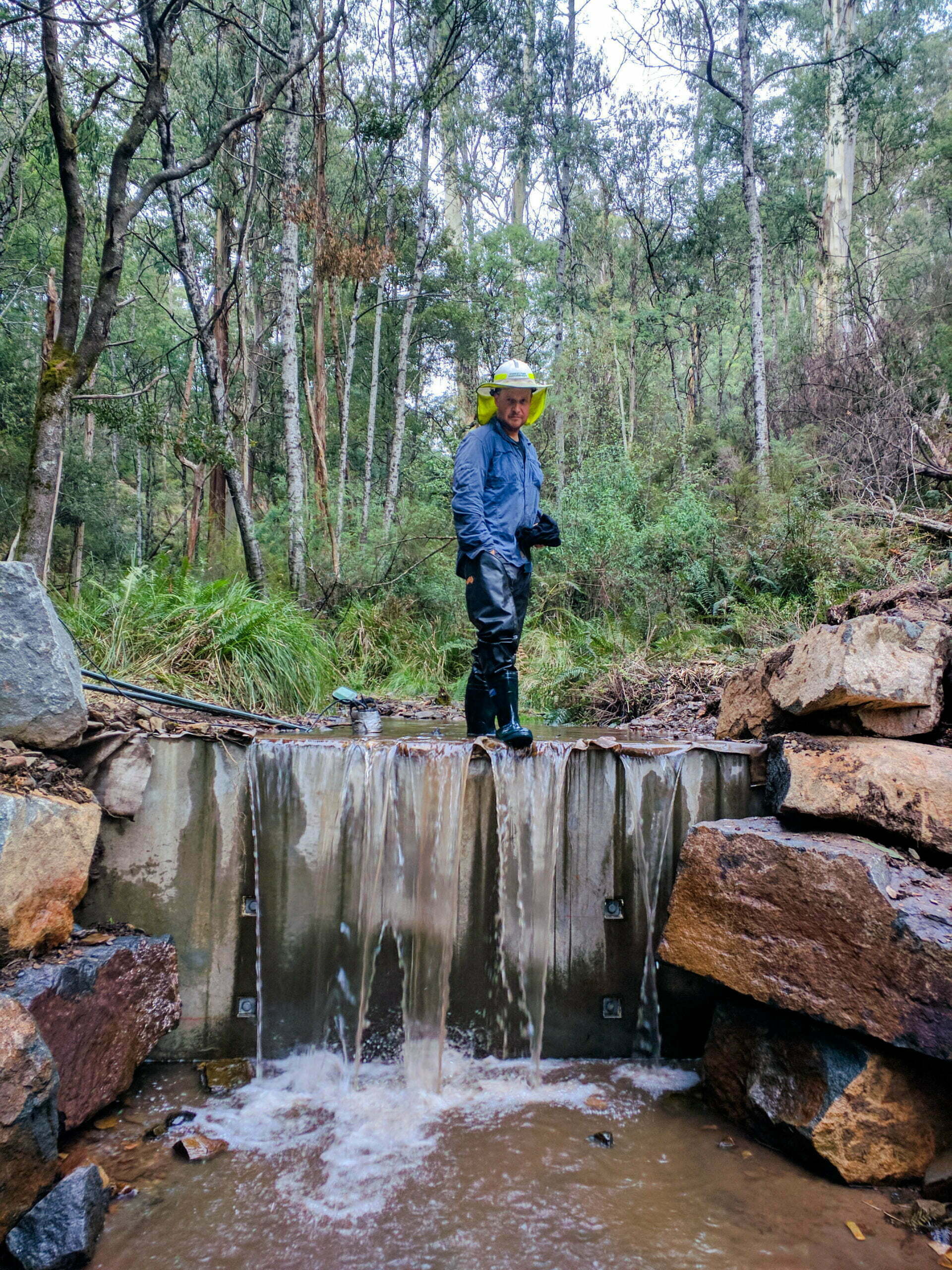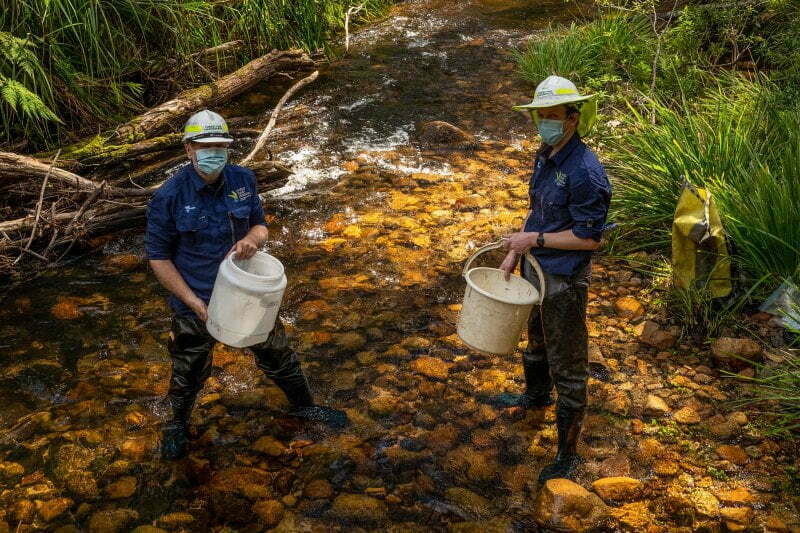In Australia, there is an alarming number of declining fish species that are not formally declared as threatened under national legislation, despite global freshwater fish decline. There is limited knowledge on how to best protect fish species using conservation strategies and science is still developing. In the case of threatened galaxiids, the Arthur Rylah Institute (ARI) has been researching the best steps for conservation for the species in order to prevent extinction. For over 30 years, ARI’s research has supported galaxiid conservation. This has included: identifying new species; determining their distribution and abundance; assessing the impacts of threats and their status; undertaking actions to protect and restore populations; and providing advice on their conservation, particularly after bushfires.


Steps for conservation:
- Identification of species
In 2014, thirteen new species of galaxiids were identified after an extensive taxonomic and genetic study of one species, the Mountain Galaxias (Galaxias olidus). Previously, it was thought that only eight species existed in Victoria. ARI’s Dr Tamaro Raadik research led to the identification of these new species through revising a myriad of studies that occurred between 2001-2010. Dr Raadik found that the Galaxias olidus was a complex of 15 different species.
ARI has also described a new species of Dwarf Galaxias, with a further five new species in the Galaxias olidus complex currently being identified. Consequently, we now know of 24 galaxiid species in Victoria including 13 of which are endemic, meaning they are only found in Victoria!
Through the correct identification of galaxiids, appropriate management strategies specific to species can be implemented.
2. Understanding distribution and abundance
Previously, Victoria had limited knowledge of the distribution and abundance of galaxiids. Early monitoring of the ARI focused on the Barred Galaxias (Galaxias fuscus) which is only found in the Goulburn River system. This study acted as a basis for further galaxiid conservation, with much work taking place following the 2009 Black Saturday Bushfires. In the last 20 years, ARI has conducted regional and state-wide monitoring programs that have guided much of what is now known about distribution and abundance of species across Victoria. This greater understanding has allowed for the formal recognition and protection status of these fish on both state and federal levels.
3. Assessing and managing threats
a) Trout predation
Introduced species, such as Brown trout and Rainbow trout, are preventing galaxiids from populating certain areas. Natural instream barriers offer protection from trout as they prevent trout from populating upstream areas, creating a safe haven for galaxiids. However, during large flow events the barrier can be breached. It was found that instream barriers (constructed, modified and natural), are vital to the protection of galaxiids against trout predation. Barriers, together with the relocation of trout downstream, were found by ARI to be best way to protect galaxiids.

b) Climate change/extinction risk
Most galaxiid populations are typically small and isolated due to their distinct habitat needs. This places them as extremely vulnerable to the impacts of climate change, such as floods, fire and drought. As the likelihood of these extreme events increases, so does the risk of extinction for galaxiids. In order to boost the genetic diversity of populations for long-term survival, translocation of fish between known habitat sites is important. Captive breeding and releases into the wild can also help establish new galaxiid populations thereby spreading extinction risk across larger areas. The ARI has developed breeding techniques for rearing threatened galaxiids.
“DEECA and ARI are working to review best practices for translocation; identify what galaxiids need to persist into the future; better understand key threats and how these may change into the future; and assess the suitability of the range of management options to protect galaxiids.”

c) Bushfire management
In the aftermath of bushfires, it is known that rainfall can wash ash and sediment into waterways. This can suffocate and bury galaxiids, along with a variety of other aquatic species. ARI has been involved in many of Victoria’s bushfire biodiversity recovery responses. This has included providing strategic advice on appropriate actions; reconnaissance of priority species and sites; emergency extractions; translocations; pioneering ex-situ management; and the return of fish once conditions improved. Find out more about these efforts here.
Ultimately, the work being done at ARI is vital to the conservation of these threatened fish species. It is also significant for the preservation of other native fish species, demonstrating the importance of research for future ecosystem management.

Resources
Main photo: Dwarf Galaxias
Source: Rhys Coleman




